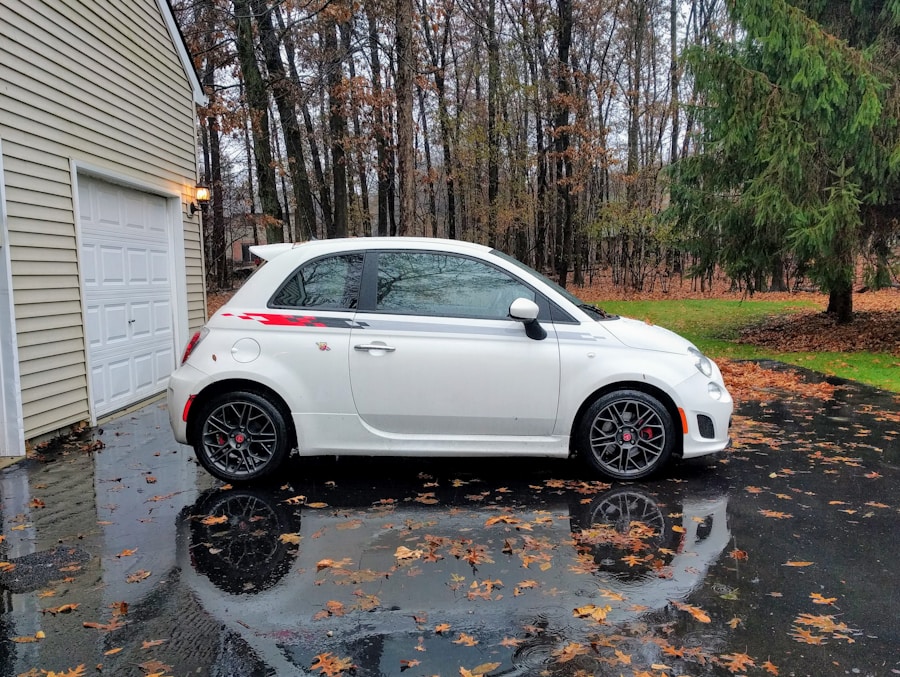When embarking on the journey to purchase a vehicle, the first step is to conduct thorough research and comparison. This phase is crucial as it lays the groundwork for informed decision-making. Begin by identifying your needs and preferences.
Are you looking for a compact car for city driving, a spacious SUV for family outings, or perhaps a rugged truck for off-road adventures? Once you have a clear understanding of your requirements, delve into the vast array of options available in the market. Utilize online resources, automotive magazines, and consumer reports to gather information on various makes and models.
In addition to understanding the types of vehicles available, it is essential to compare specifications, features, and performance metrics. Websites like Edmunds, Kelley Blue Book, and Consumer Reports provide detailed insights into fuel efficiency, safety ratings, and user reviews. For instance, if you are considering a hybrid vehicle, compare the electric range, battery life, and overall efficiency of different models.
Pay attention to the latest technological advancements such as driver-assistance features, infotainment systems, and connectivity options. By compiling this information, you can create a shortlist of vehicles that align with your criteria, making the subsequent steps in the purchasing process more manageable.
Key Takeaways
- Research and compare different vehicle options to find the best fit for your needs and preferences.
- Set a budget to determine how much you can afford to spend on a new vehicle, including potential financing options.
- Test drive multiple vehicles to get a feel for their performance, comfort, and features before making a decision.
- Consider the resale value of the vehicles you are interested in to make a more informed purchasing decision.
- Negotiate the price with the seller to ensure you are getting the best deal possible for your new vehicle.
Set a Budget
Establishing a budget is a pivotal step in the vehicle purchasing process. It is essential to determine not only how much you can afford to spend on the vehicle itself but also to consider additional costs associated with ownership. These costs include insurance premiums, fuel expenses, maintenance fees, and potential financing charges.
A well-defined budget will help you avoid overspending and ensure that your new vehicle fits comfortably within your financial means. When setting your budget, consider using the 20/4/10 rule as a guideline: aim to put down at least 20% of the vehicle’s purchase price, finance the vehicle for no more than four years, and keep total monthly vehicle expenses (including loan payments, insurance, and maintenance) under 10% of your gross monthly income. This approach not only helps in managing your finances but also reduces the risk of being “upside down” on your loan—owing more than the vehicle is worth.
Additionally, be mindful of potential hidden costs such as registration fees and taxes that may vary by state or locality.
Test Drive Multiple Vehicles

Once you have narrowed down your options based on research and budget considerations, it is time to take the next critical step: test driving multiple vehicles. A test drive is an invaluable opportunity to experience firsthand how a vehicle handles on the road. It allows you to assess comfort levels, visibility, noise levels, and overall driving dynamics.
Each vehicle can feel remarkably different when behind the wheel; thus, personal experience is irreplaceable. During your test drives, pay attention to various aspects of the vehicle’s performance. Evaluate how responsive the steering is and whether the brakes feel firm and reliable.
Consider how well the vehicle accelerates and how it performs during turns. Additionally, take note of interior comfort—are the seats supportive? Is there ample legroom?
Test out the infotainment system to see if it meets your expectations for usability and connectivity. If possible, try driving in different conditions such as highway speeds and city traffic to get a comprehensive feel for each vehicle’s capabilities.
Consider Resale Value
| Car Model | Resale Value (%) |
|---|---|
| Toyota Tacoma | 72% |
| Honda Civic | 65% |
| Jeep Wrangler | 58% |
| Subaru Impreza | 56% |
As you weigh your options for a new vehicle, it is prudent to consider its potential resale value. Not all vehicles depreciate at the same rate; some brands and models hold their value better than others due to factors such as reliability, demand, and brand reputation. Researching resale values can provide insight into which vehicles may offer better long-term financial returns.
For example, brands like Toyota and Honda are often lauded for their strong resale values due to their reputation for reliability and durability. In contrast, luxury vehicles may experience steeper depreciation in their early years. Websites like Kelley Blue Book offer tools that allow you to assess projected resale values based on historical data.
Understanding these trends can help you make a more informed decision about which vehicle will not only meet your immediate needs but also serve you well in the future when it comes time to sell or trade it in.
Negotiate the Price
Negotiating the price of a vehicle can be one of the most daunting aspects of the purchasing process for many buyers. However, it is also one of the most critical steps in ensuring that you get a fair deal. Armed with research on market prices and comparable sales data from your earlier research phase, you can approach negotiations with confidence.
Start by determining a fair price based on your findings; this will serve as your baseline during discussions with dealers. When negotiating, be prepared to walk away if the terms do not meet your expectations. Many buyers feel pressured to accept an offer out of fear of losing out on a deal; however, maintaining a firm stance can often lead to better offers from salespeople who want to close the sale.
Additionally, consider timing your purchase strategically—end-of-month or end-of-year sales events often provide opportunities for better deals as dealerships aim to meet sales quotas. Remember that negotiation is not just about price; consider discussing financing terms or additional perks such as free maintenance packages or extended warranties as part of the overall deal.
Check for Incentives and Rebates

Before finalizing your purchase, it is essential to check for any available incentives or rebates that could significantly reduce your overall cost. Manufacturers often offer promotional deals to stimulate sales on specific models or during certain times of the year. These incentives can take various forms, including cash rebates, low-interest financing options, or special lease terms.
To find these offers, visit manufacturer websites or consult local dealerships directly. Additionally, websites like Cars.com or Autotrader can provide information on current promotions in your area. For instance, if you are considering an electric vehicle (EV), there may be federal tax credits available that can substantially lower your purchase price.
Understanding these incentives can provide you with additional leverage during negotiations and ultimately lead to significant savings.
Review the Warranty and Maintenance Costs
A comprehensive understanding of warranty coverage and maintenance costs is vital when purchasing a vehicle. Warranties vary significantly between manufacturers; some offer extensive coverage that includes powertrain components for up to ten years or 100,000 miles, while others may provide more limited protection. Familiarize yourself with what is covered under warranty and for how long—this knowledge can save you from unexpected repair costs down the line.
In addition to warranty considerations, evaluate the expected maintenance costs associated with each vehicle model you are considering. Some vehicles may require more frequent servicing or specialized parts that can drive up costs over time. Research common issues reported by current owners through forums or consumer reviews; this can provide insight into potential long-term expenses associated with specific models.
By factoring in these elements into your decision-making process, you can choose a vehicle that not only meets your immediate needs but also aligns with your long-term financial goals.
Get a Pre-Purchase Inspection
Before finalizing any purchase agreement, especially if you are considering a used vehicle, it is highly advisable to get a pre-purchase inspection conducted by a qualified mechanic. This inspection serves as an additional layer of protection against unforeseen issues that may not be immediately apparent during test drives or visual inspections. A professional mechanic can identify potential problems related to engine performance, transmission issues, brake condition, and even signs of previous accidents.
When arranging for an inspection, choose a reputable mechanic who specializes in the type of vehicle you are considering. Be prepared to pay a nominal fee for this service; however, this investment can save you from costly repairs in the future if significant issues are discovered before purchase. If any problems are identified during the inspection process, use this information as leverage in negotiations with the seller—whether it’s a private party or dealership—to potentially lower the price or request repairs before finalizing the sale.
This proactive approach ensures that you are making a sound investment rather than taking unnecessary risks with your hard-earned money.












